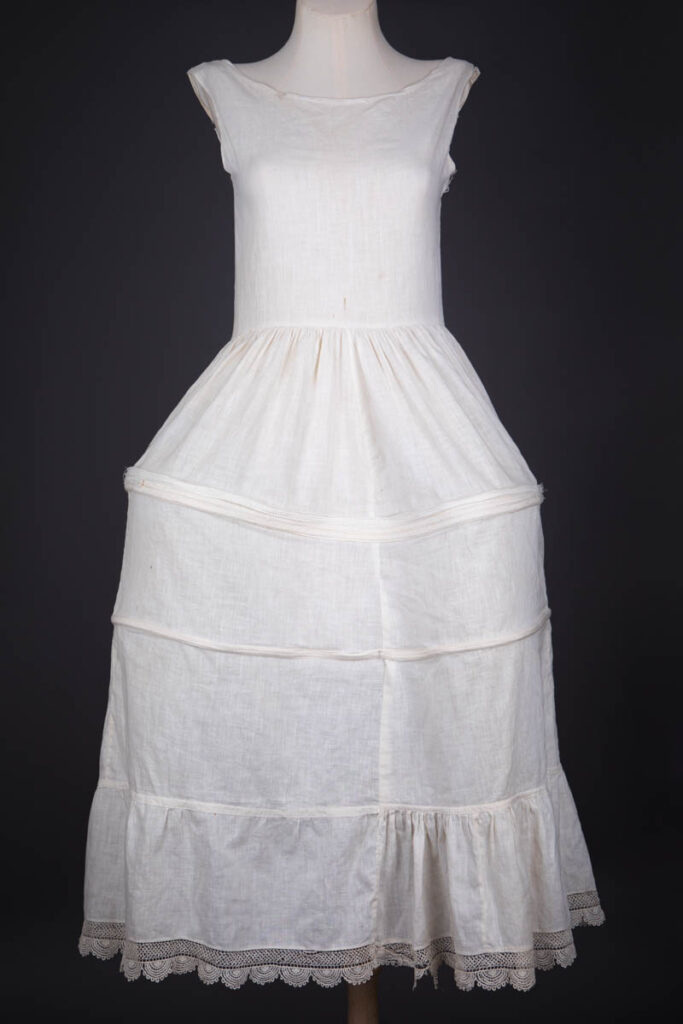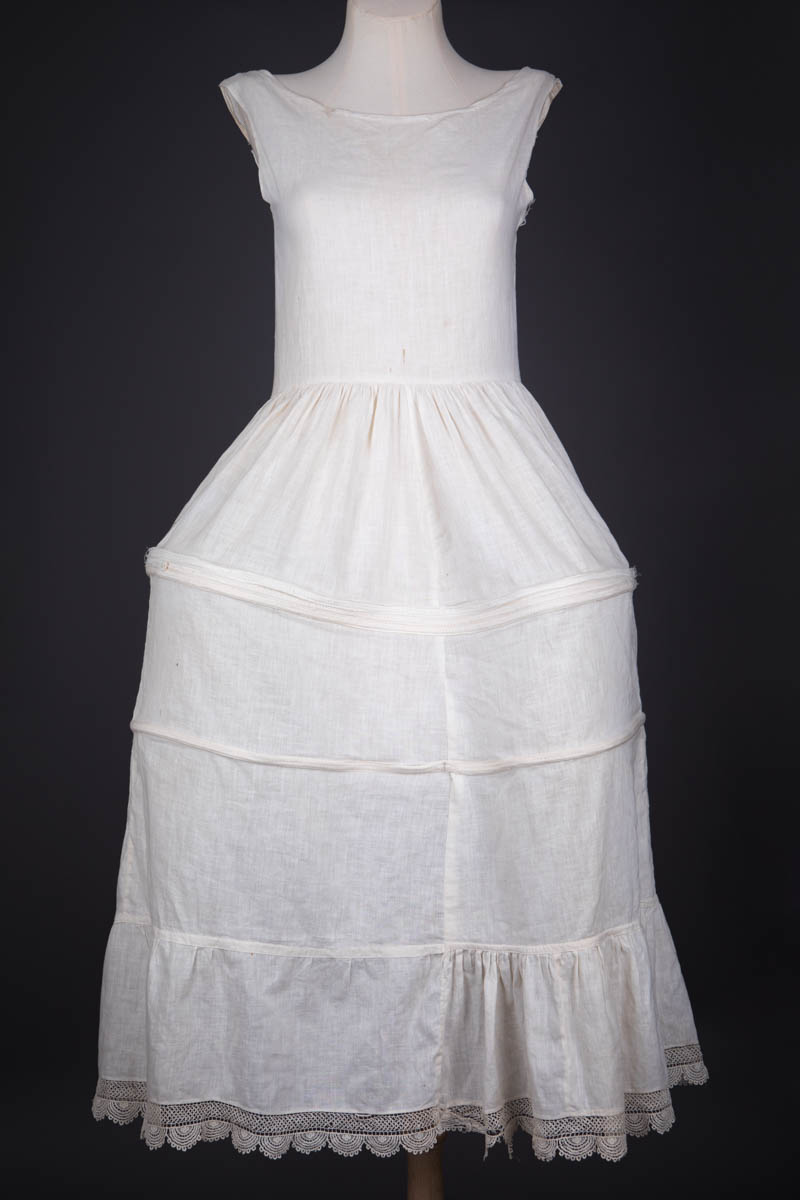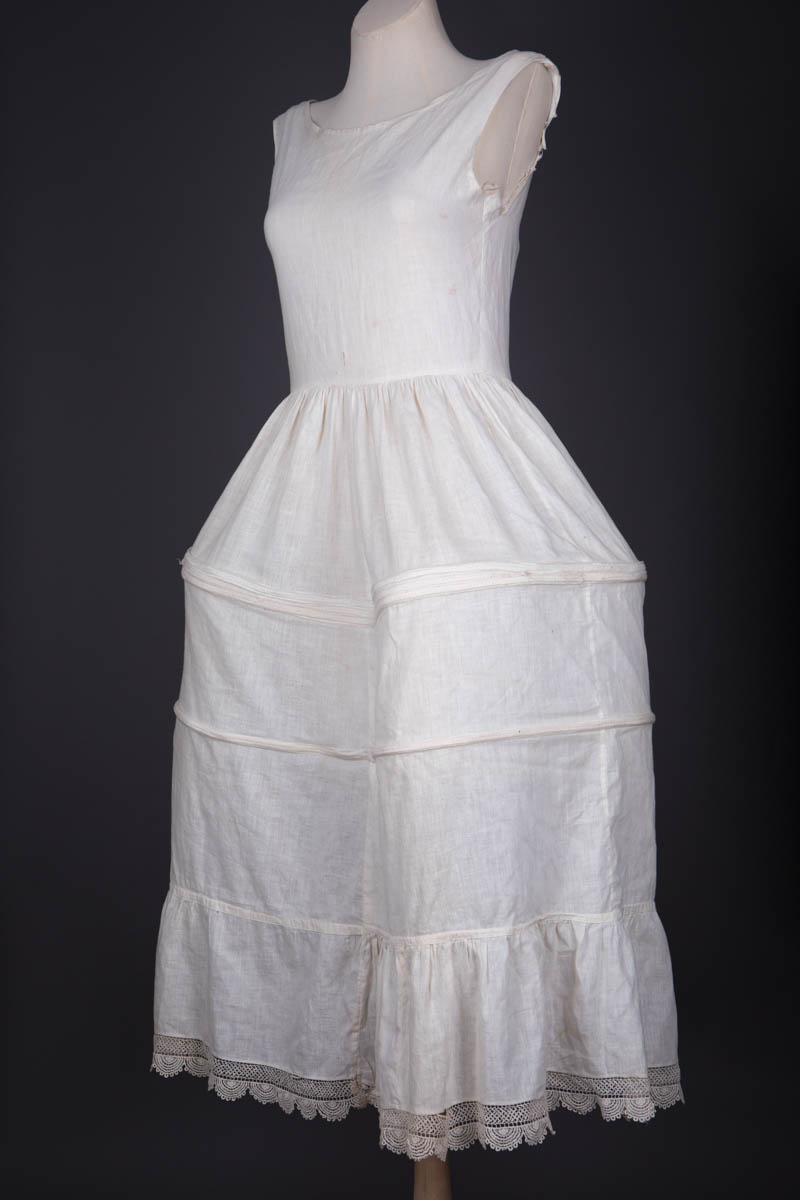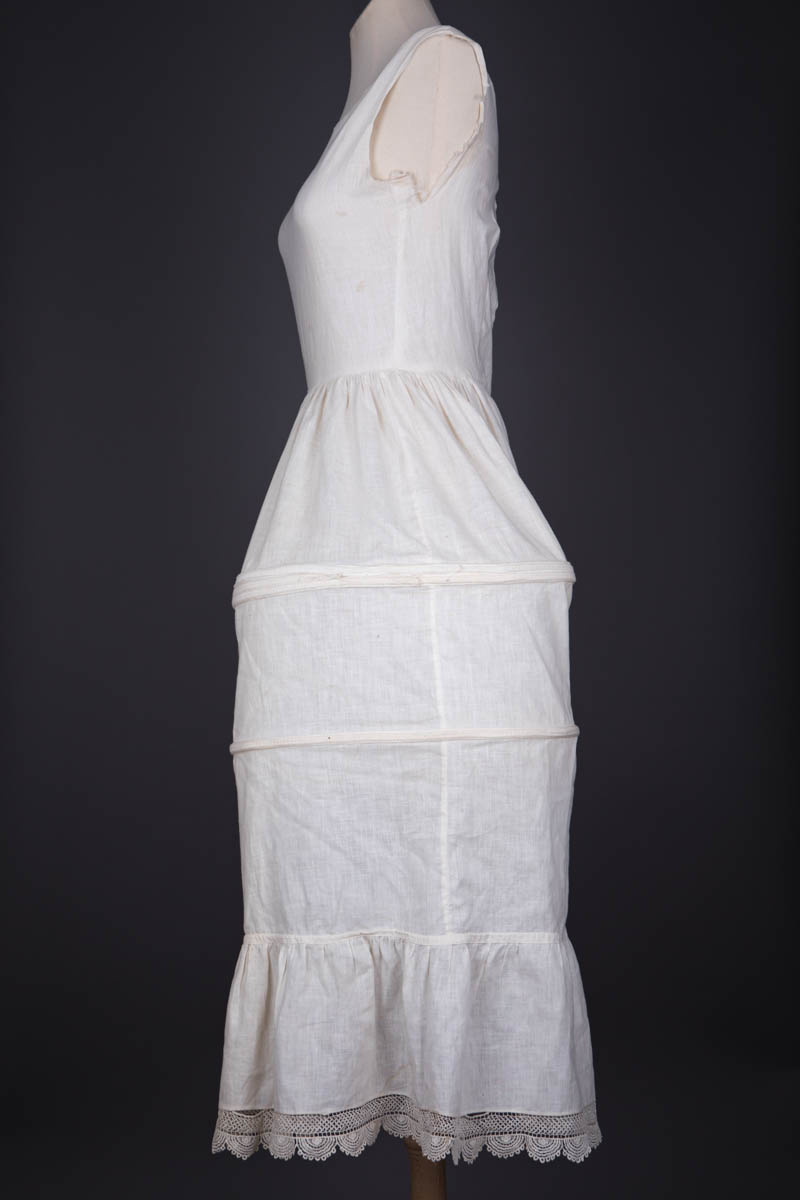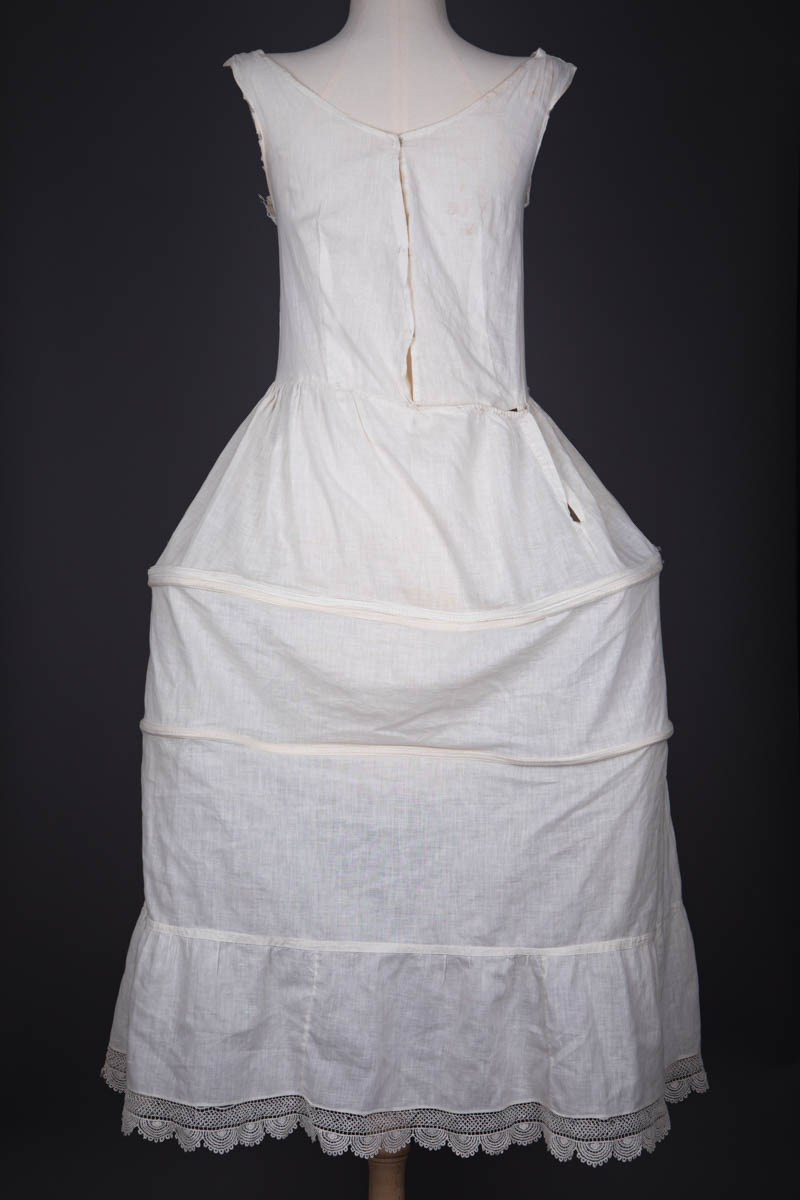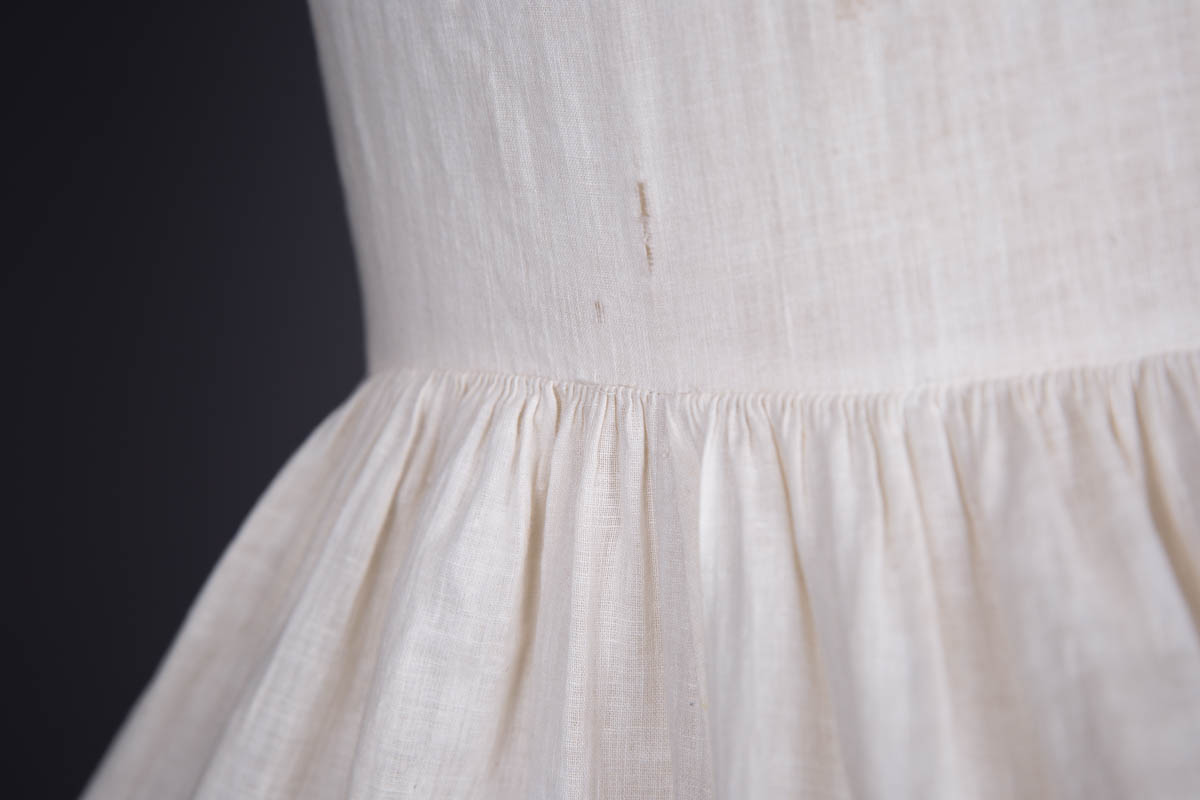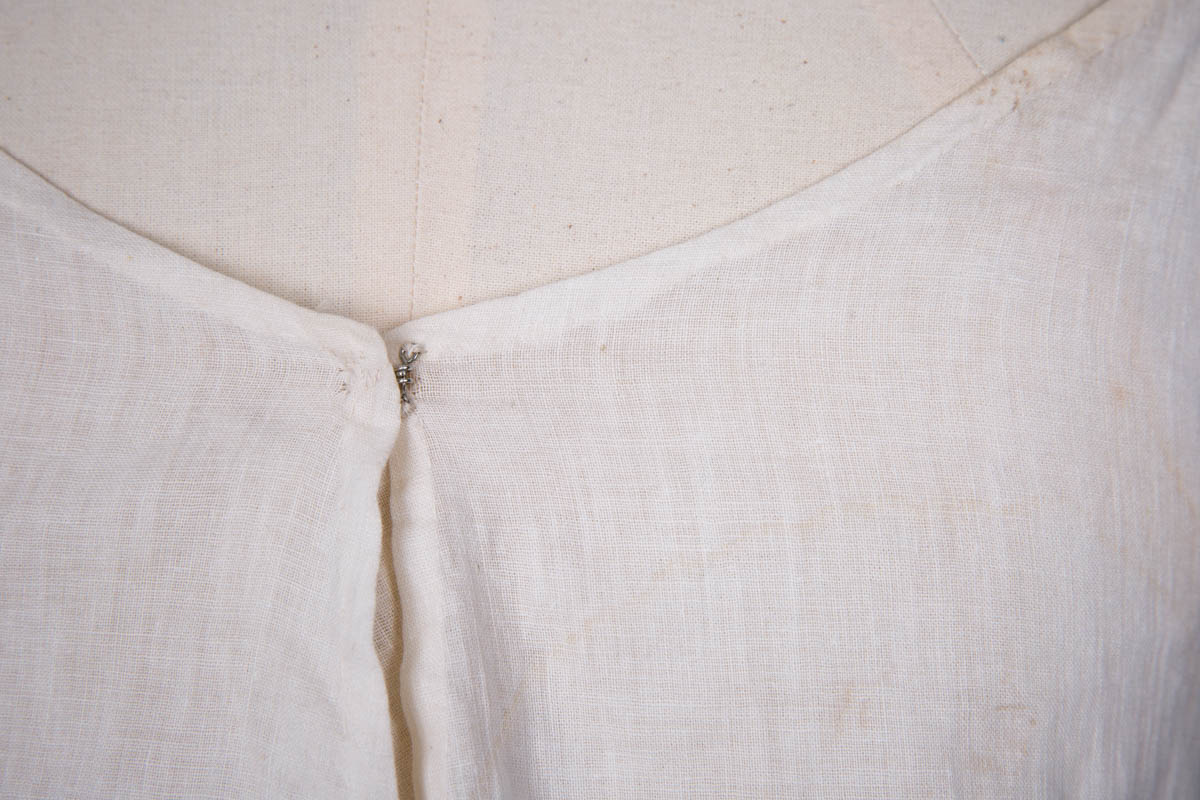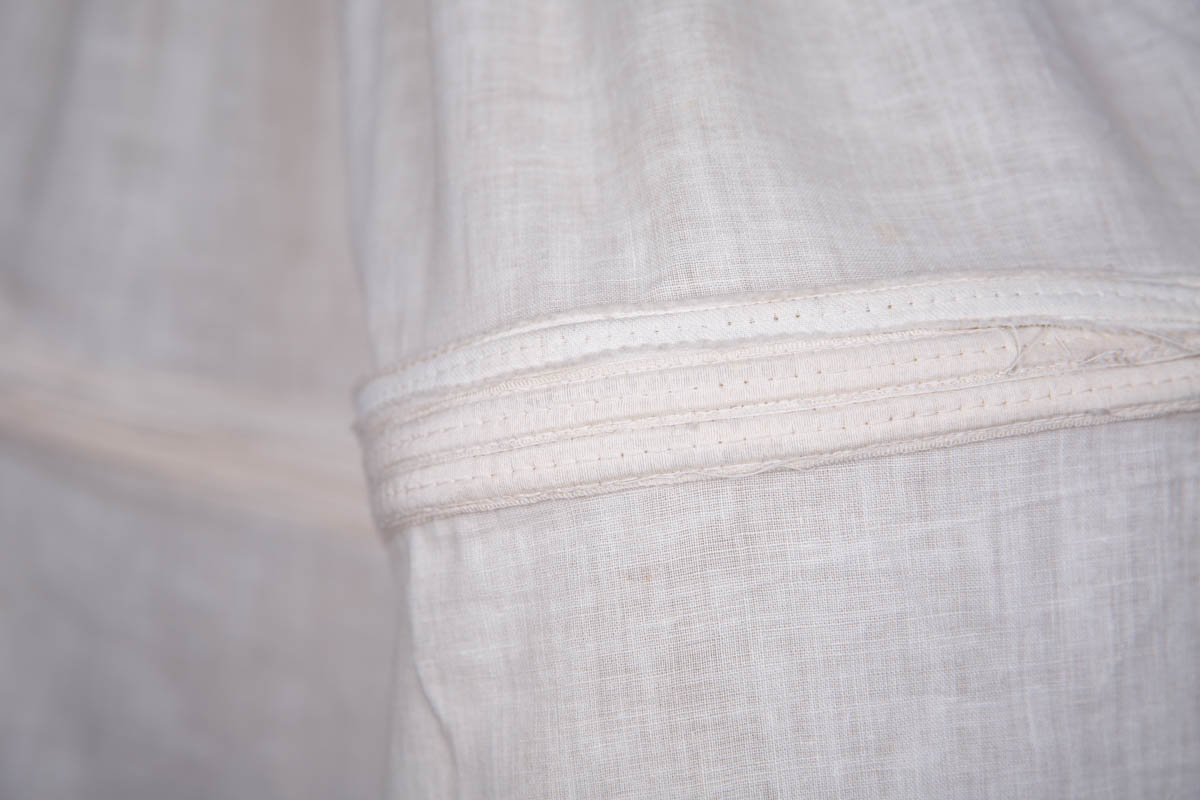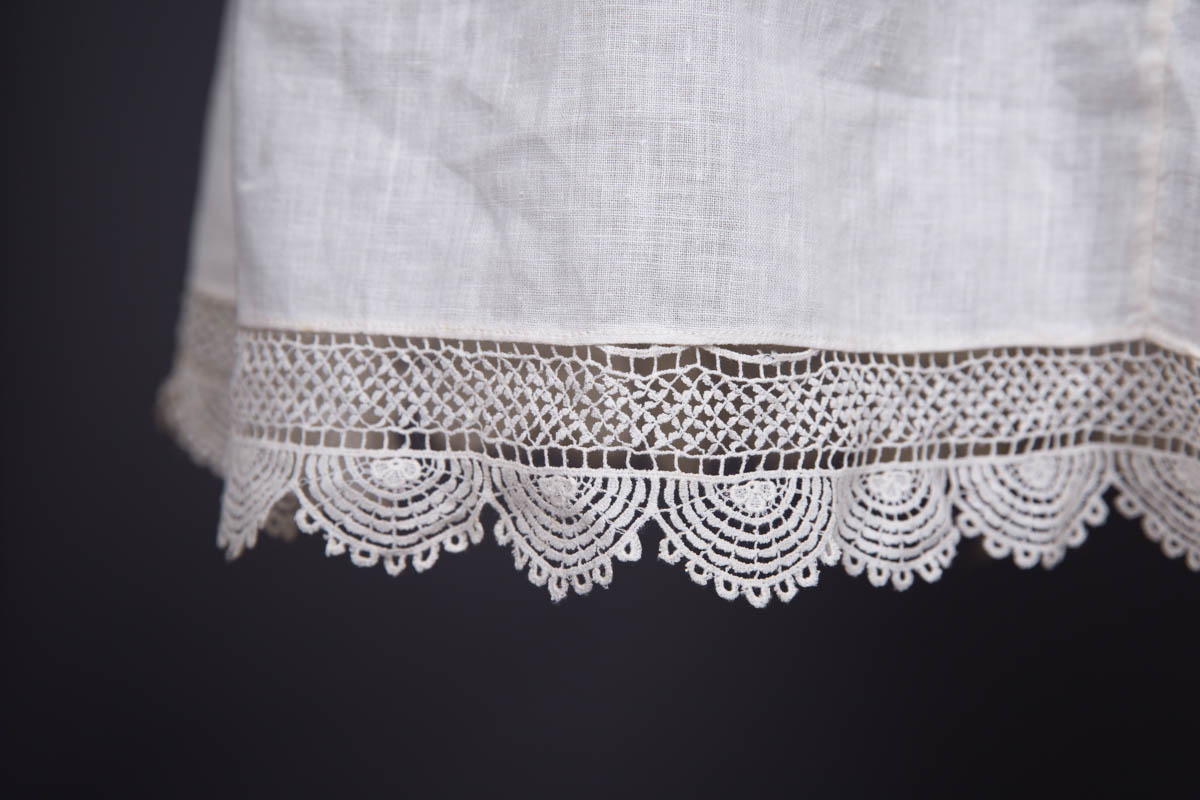Date: c. 1920s
Origin: Unknown
Fabric: Cotton muslin
Brand: Custom made
An underdress in cotton muslin, with integrated pannier structures to be worn under a robe de style dress. The dress fastens with hooks and eyes through the centre back and across the waist. The pannier structure is created with pre-made ‘featherbone’ style tape, which has been machine stitched to the garment’s skirt in three horizontal rows. The hem of the dress is trimmed with a decorative chemical lace.
The ‘Robe De Style’ is a style of dress most associated with the 1920s, and was arguably popularized by the couturier Jeanne Lanvin, for whom it was a design signature. Unlike the ‘Flapper’ style straight cut chemise dress that most people associate with the 1920s, the Robe De Style was characterised by its dropped waist and very full skirt, often supported by petticoats, panniers or hoops. These supports could either be built into the dress, or made as a separate piece of foundationwear. Alongside Lanvin, other noteworthy design houses that created this style included Lucile, Callot Soeurs and Boué Soeurs. Boué Soeurs in particularly was renowned for using layered tulles and laces embellished with profuse ribbonwork, techniques that often crossed over with the lingerie designs of the period.
From the collection of Karolina Laskowska
